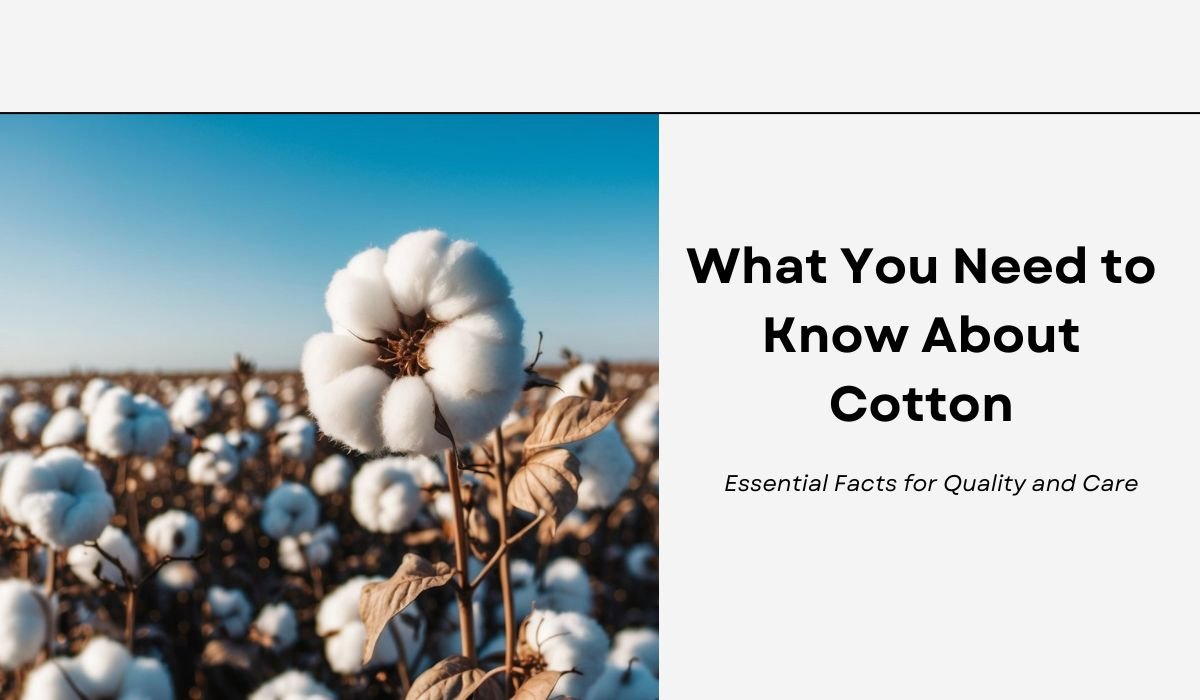Understanding Cotton Fabric: From Farm to Wardrobe – A Complete Guide to Nature’s Finest Fiber
Cotton is one of the world’s most important natural fibres, playing a vital role in our daily lives. This soft, fluffy fibre grows naturally around the seeds of cotton plants of the genus Gossypium, making it a renewable resource that humans have used for thousands of years.
Cotton stands out among textile fibres because it is breathable, durable, and becomes more tear-resistant when wet. Its versatility makes it perfect for countless applications, from comfortable clothing to industrial materials. The fabric can be woven into various textures, from light and airy to heavy and robust.
Cotton’s widespread use in textiles spans multiple industries, featuring in everything from everyday clothing to specialised medical supplies. While pure cotton offers excellent comfort and breathability, manufacturers often blend it with synthetic fibres to enhance its performance characteristics.
On This Page
Key Takeaways
- Cotton is a renewable natural fibre that offers superior breathability and comfort for everyday use
- The fibre’s unique properties allow it to be transformed into various fabric types for different applications
- Modern cotton production combines traditional farming methods with sustainable practices to meet global demand
The History of Cotton
Cotton played a key role in shaping civilisations and economies across the world. The soft, fluffy fibre has been cultivated for thousands of years and transformed manufacturing during the Industrial Revolution.
Ancient Civilisations and Cotton
Cotton cultivation began independently in both Pakistan around 5000 BCE and Peru around 6000 BCE. Ancient Egyptians mastered cotton farming and weaving, creating fine textiles that became prized trade goods.
In the Indus Valley, skilled craftsmen developed advanced techniques for spinning and weaving cotton. Their methods spread through trade routes to other civilisations.
Arab merchants introduced cotton to Europe around 800 CE. The fabric’s comfort and versatility made it highly sought after throughout the Mediterranean region.
Industrial Revolution and the Cotton Gin
The Industrial Revolution transformed cotton processing in the 18th century. New machines like the spinning jenny and water frame dramatically increased production speeds.
Eli Whitney’s cotton gin, invented in 1793, revolutionised cotton processing. The machine could separate cotton fibres from seeds 50 times faster than by hand. This invention made cotton much more profitable to produce.
British textile mills became the centre of global cotton manufacturing. The industry’s rapid growth helped fuel Britain’s economic expansion and colonial trade networks.
Cotton Cultivation
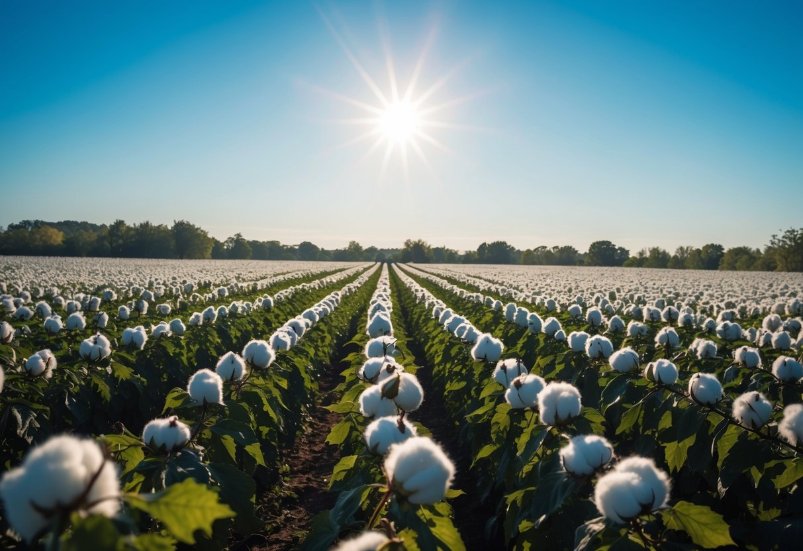
Cotton grows best in specific climate conditions and requires careful farming practices to produce high yields. The crop needs precise soil conditions and proper management throughout its growing cycle.
Growing Regions
Cotton thrives in tropical and subtropical regions where temperatures stay between 21-30°C. These areas provide the warm, sunny conditions cotton plants need to develop properly.
Countries like India, China, and Brazil lead global cotton production due to their ideal climate patterns. Each region has a distinct growing season based on local weather conditions.
The plant adapts well to different environments as long as the soil drains properly. Cotton requires at least 6-7 months of frost-free weather to complete its growth cycle.
Cotton Farming Practices
Proper soil preparation is essential for successful cotton farming. The crop grows best in well-draining loamy or sandy soils with a pH between 6.0-7.0.
Farmers must monitor water usage carefully. While cotton is drought-tolerant, it needs consistent moisture during key growth stages. Organic cotton farming uses less water than conventional methods.
To prevent soil erosion, many farmers use:
- Contour ploughing
- Cover crops
- Minimum tillage techniques
Regular soil testing helps determine proper fertiliser application. Cotton needs nitrogen during early growth and phosphorus for boll development.
Types and Properties of Cotton
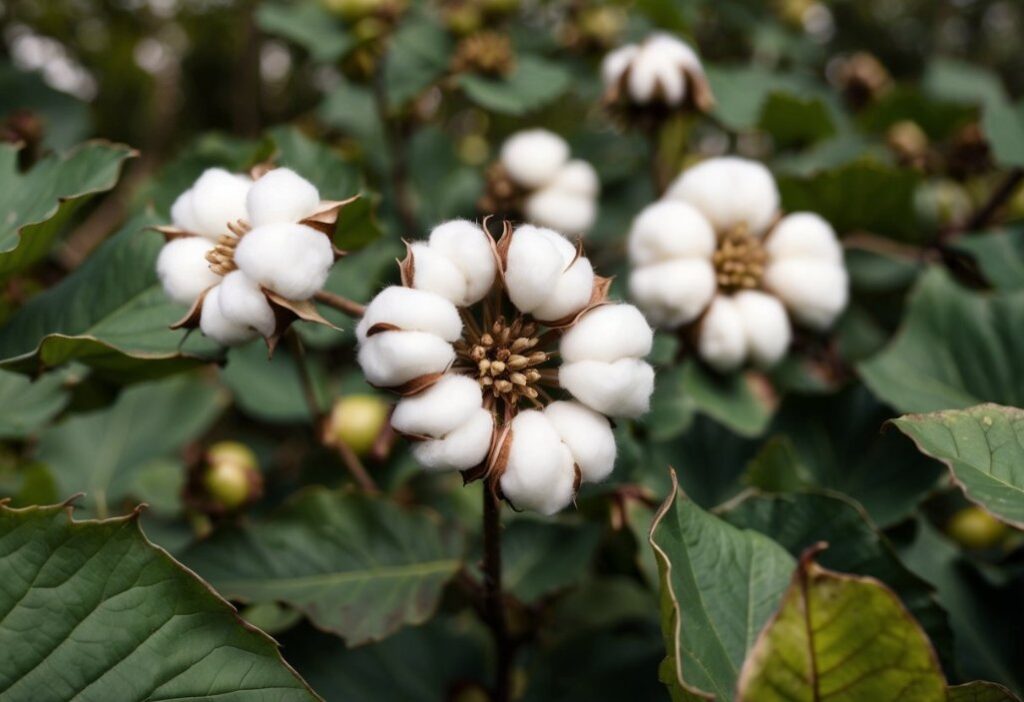
Cotton consists of several distinct varieties, each with unique characteristics and uses. The fibres contain mostly cellulose and vary in length, strength, and texture based on their type and growing conditions.
Cotton Varieties
Upland cotton makes up 90% of global cotton production. This versatile variety grows well in many climates and produces medium-length fibres.
Egyptian cotton is prized for its extra-long fibres that create exceptionally soft and durable fabrics. It grows exclusively in Egypt’s Nile River Valley.
Pima cotton shares similar qualities with Egyptian cotton, featuring extra-long staple fibres that create premium textiles.
Organic cotton grows without synthetic pesticides or fertilisers. Farmers must follow strict certification standards to label their cotton as organic.
Fibre Characteristics
Cotton fibres consist of roughly 90% cellulose, making them naturally breathable and moisture-absorbing.
The fibres grow in protective bolls around seeds of Gossypium plants. When mature, these bolls burst open to reveal the fluffy white fibres.
Cotton is naturally hypoallergenic, making it ideal for sensitive skin. The fibres become stronger when wet and can withstand high washing temperatures.
Fibre length ranges from 2.2 to 4.2 centimetres. Longer fibres create smoother, more durable yarns, while shorter fibres work well for everyday items.
Cotton Production and Market
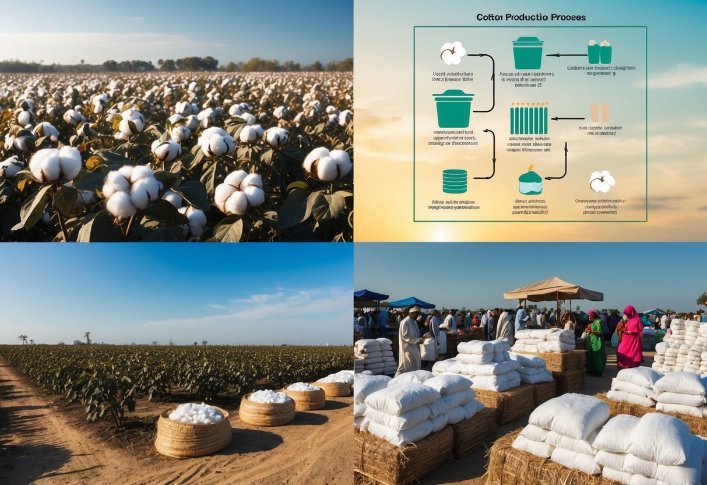
Cotton stands as one of the world’s most significant agricultural commodities. Global cotton production reaches around $46 billion annually, with millions of farmers growing this versatile crop across multiple continents.
Harvesting and Processing
Cotton plants produce fluffy white bolls that contain seeds wrapped in soft fibres. The harvesting process begins when these bolls split open, revealing the cotton within.
Modern cotton farms use mechanical harvesters to collect the cotton bolls. These machines strip the cotton from the plants whilst leaving the stems and leaves behind.
After harvesting, the cotton goes through ginning – a crucial process that separates the fibres from the seeds. One bale of cotton typically yields about 250 kilograms of fibre.
The seeds serve multiple purposes:
- Oil production
- Animal feed
- Replanting for next season’s crop
Global Cotton Market
The cotton industry employs approximately 150 million people across 75 countries. China, India, and the United States lead global production.
The European Union produces roughly 340,000 tonnes annually, representing 1% of worldwide cotton output.
Cotton’s primary use remains textile production, including:
- Clothing
- Bedding
- Towels
- Industrial materials
Trading occurs through commodity exchanges where prices fluctuate based on:
- Weather conditions
- Global demand
- Production levels
- Economic factors
Cotton in the Textile Industry
Cotton dominates textile manufacturing worldwide as a versatile and essential raw material. The fashion industry uses cotton in over one-third of all fabrics, making it crucial for clothing, bedding and other textile products.
Fabric Manufacturing
Cotton fibres transform into fabric through spinning and weaving processes. Machines twist the fibres into continuous yarn strands, which workers then weave or knit into textiles.
Popular cotton fabrics include denim for jeans, canvas for bags and shoes, and lightweight cotton for t-shirts and bedsheets. Each type requires specific manufacturing techniques.
Special treatments enhance cotton’s properties. Manufacturers apply finishes to make fabrics stain-resistant, wrinkle-free, and less likely to shrink in the wash.
Innovation and Trends
Modern textile factories use advanced technology to improve cotton processing efficiency. Smart machines monitor quality and reduce waste throughout production.
Precision agriculture technologies like GPS-guided equipment and soil sensors help farmers grow better cotton crops. These innovations lead to higher-quality textiles.
Sustainable manufacturing practices are gaining importance. Textile makers now focus on:
- Water conservation in processing
- Eco-friendly dyes and treatments
- Recycling cotton waste
- Reducing chemical use
Environmental Impact of Cotton
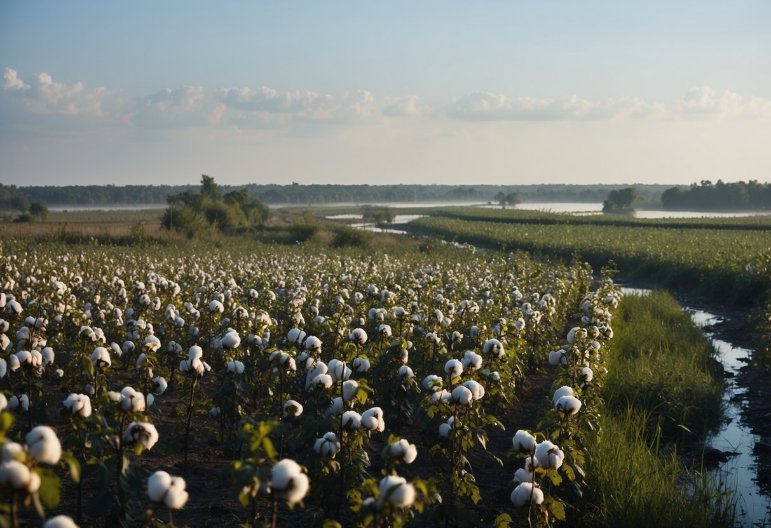
Cotton is one of Earth’s most resource-intensive crops. Growing cotton requires massive amounts of water and often relies on harmful chemicals that damage ecosystems and wildlife.
Water Usage and Pollution
Cotton farming requires 2,700 litres of water to produce a single t-shirt. That’s enough water for one person to drink for over two years.
The excessive water demands have led to severe environmental damage. Major water bodies like the Aral Sea and Murray Darling River have suffered devastating impacts from cotton irrigation.
Cotton farming uses an alarming amount of agricultural chemicals. The industry accounts for 16% of global insecticide use despite cotton only growing on a small percentage of farmland. These chemicals contaminate soil and water supplies.
Sustainable Cotton
Organic cotton farming eliminates harmful pesticides and synthetic fertilisers. This protects soil health and reduces water pollution.
Buying second-hand clothing helps reduce demand for new cotton production. Creative reuse of old cotton items like making quilts from worn clothing extends the life of existing cotton products.
Choosing organic and recycled cotton products supports more sustainable farming methods. These alternatives help protect vital water resources and reduce chemical pollution.
Cotton Care and Maintenance
Cotton is one of the most versatile and easy-care fabrics available. Its natural fibres make it simple to maintain with proper care techniques.
Always check the care label before washing cotton items. Most cotton garments can be machine washed in warm water with regular detergent.
Cotton fabric doesn’t need fabric softeners to stay soft. These products can actually clog the fabric’s pores and reduce its natural properties.
Key washing tips:
- Sort colours before washing
- Use warm water (30-40°C)
- Wash similar items together
- Turn garments inside out
- Avoid overloading the machine
Proper storage keeps cotton items in top condition. Fold clean cotton clothes and store them in a cool, dry place away from direct sunlight.
To remove stains, treat them promptly with cold water and gentle soap. Avoid rubbing the stain, as this can damage the fibres.
Pure cotton may shrink slightly in its first wash. To minimise shrinkage, use cooler water temperatures and avoid high-heat drying.
For drying, cotton items can be tumble-dried on medium heat or air-dried. Remove items while slightly damp to prevent wrinkles.
Frequently Asked Questions
Cotton remains one of Earth’s most versatile natural fibres, used in countless products worldwide. Its unique properties and widespread cultivation make it essential for textiles, manufacturing, and daily life.
How is cotton utilised in various products?
Cotton fibres create countless everyday items. Cotton fabrics make up a large portion of clothing due to their comfort and durability.
Cotton appears in household items like towels, bedding, and furniture. The fibres also create medical supplies, industrial materials, and food products from cottonseed oil.
What are the key characteristics of cotton?
Cotton gets stronger when wet, making it more tear-resistant than when dry. This unique feature sets it apart from other natural fibres.
Pure cotton lacks natural stretch. Manufacturers often blend it with synthetic fibres to add elasticity to garments.
What essential facts should one know about cotton?
Cotton requires specific growing conditions to thrive. The plant needs mineral nutrients, particularly nitrogen and phosphorus, along with adequate water and sunlight.
Cotton clothes may shrink during washing, especially with alkaline detergents. Proper care instructions help maintain cotton items’ shape and quality.
In what ways is cotton fabric significant to the textile industry?
Cotton dominates the global textile market as a primary natural fibre. Better Cotton has become the largest cotton sustainability programme globally, involving farmers, manufacturers, and retailers.
The fibre’s versatility allows for various weaving techniques and fabric weights. Cotton suits everything from delicate baby clothes to sturdy workwear.
How is cotton cultivated and processed?
Cotton farming requires careful timing and optimal conditions. Farmers plant seeds in warm soil and monitor growth throughout the season.
After harvesting, cotton goes through ginning to separate fibres from seeds. The cleaned fibres then move to spinning mills for yarn production.
What impact does cotton production have on the environment?
Cotton farming uses significant water resources. Modern farming methods focus on reducing water consumption and chemical use.
Sustainable cotton initiatives promote environmentally friendly practices. These programmes help farmers reduce their environmental impact while maintaining crop yields.
Related Posts:

